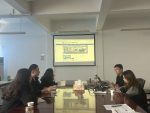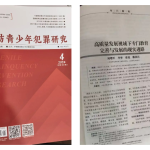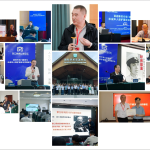Building upon the foundational idea that history shapes the frameworks of our towns and international agreements, it is essential to explore how cultural heritage functions as a core element in contemporary urban development. Recognizing the continuity between past and present not only enriches our understanding of cityscapes but also informs sustainable and inclusive planning strategies for future communities. As we delve into this complex relationship, we observe that cultural heritage is far more than preserved monuments—it is a living influence that molds urban identities, aesthetics, and social dynamics.
2. Architectural Heritage and Urban Aesthetics
3. Cultural Landscapes and Urban Space Utilization
4. Social and Cultural Factors in Planning
5. Policy and Legal Frameworks
6. Non-Obvious Impacts
7. Future Directions
8. Connecting Back
The Role of Cultural Heritage in Shaping Urban Identity
Cultural heritage significantly influences the identity of modern cities, serving as a touchstone for community pride and continuity. Iconic landmarks, historical districts, and preserved monuments act as visual symbols that define a city’s unique character. For example, the Old City of Jerusalem embodies centuries of religious and cultural history, shaping its modern urban fabric and attracting millions of visitors annually. Similarly, the Medina of Fez in Morocco preserves traditional craftsmanship and urban layout, which continue to influence contemporary urban planning decisions.
Preservation of cultural symbols within urban environments fosters a sense of belonging and continuity. Cities like Kyoto, Japan, have maintained ancient temples and traditional neighborhoods, creating a harmonious balance between modern development and heritage conservation. These examples demonstrate that cultural heritage is not static but actively shapes how cities evolve and project their identities in a globalized world.
Architectural Heritage and Urban Aesthetics
The influence of traditional architecture profoundly impacts modern building regulations and urban aesthetics. Cities like Venice and Prague have established strict guidelines to preserve their historic facades and skyline, ensuring that new developments harmonize with existing heritage styles. The integration process involves adapting traditional architectural elements—such as arches, facades, and materials—into contemporary designs, fostering a cohesive cityscape.
However, balancing preservation with modernization presents challenges. For example, in London, the need for modern infrastructure often conflicts with heritage conservation, requiring innovative solutions like adaptive reuse—transforming former industrial spaces into cultural venues or residential areas while retaining their historic character. This approach ensures cities remain vibrant and functional without sacrificing their architectural legacy.
Cultural Landscapes and Urban Space Utilization
Natural and cultural landscapes serve as guiding principles for urban expansion and spatial organization. Sacred sites, such as Mount Fuji in Japan or Uluru in Australia, influence city planning by limiting development around these areas, emphasizing their spiritual and cultural significance. Similarly, historical zones—like the Historic Center of Rome—are designated as protected areas that shape urban growth strategies, ensuring that new infrastructure complements the existing cultural fabric.
Adaptive reuse exemplifies how heritage spaces are repurposed for modern needs. In Paris, former industrial warehouses have been transformed into art galleries and coworking spaces, preserving their historical essence while serving contemporary functions. Such practices promote sustainable urban development by reducing urban sprawl and maintaining cultural continuity.
Social and Cultural Factors in Planning Processes
Community engagement rooted in cultural history fosters inclusive urban planning. Involving local populations in preservation efforts ensures that development reflects diverse cultural narratives. For instance, in Barcelona, participatory planning has prioritized maintaining the identity of neighborhoods like El Raval, blending historic character with modern amenities.
Cultural narratives influence development priorities, shaping policies that protect intangible heritage—such as traditional festivals, crafts, and social practices. Cities like Mexico City incorporate cultural storytelling into public spaces, reinforcing community bonds and cultural pride, which are vital for sustainable urban growth.
Policy and Legal Frameworks Protecting Cultural Heritage in Urban Development
Heritage conservation laws and zoning regulations are instrumental in safeguarding cultural identity amid urban expansion. Countries like Italy and France have established stringent legal frameworks that restrict modifications to historic sites, ensuring their preservation for future generations. International agreements, such as the World Heritage Convention, further influence local policies, encouraging cities worldwide to adopt heritage-sensitive planning approaches.
These policies often include incentives for adaptive reuse projects and penalties for unauthorized alterations, creating a legal environment conducive to balancing growth with preservation. Effective enforcement ensures that urban development sustains cultural authenticity while accommodating modern needs.
Non-Obvious Impacts of Cultural Heritage on Urban Infrastructure
Cultural heritage influences urban infrastructure beyond physical monuments. Intangible cultural practices—such as traditional markets, street festivals, and communal gathering spaces—shape the design and function of public areas. For example, the Night Markets of Taipei are integral to local cultural identity, influencing city planning to prioritize accessible, vibrant public spaces.
Furthermore, cultural heritage acts as a driver for sustainable development. Cities like Vancouver incorporate indigenous cultural principles into urban planning, promoting environmentally sustainable practices rooted in traditional knowledge. Cultural narratives also influence transportation systems, encouraging connectivity that respects historical pathways and community routes.
Future Directions: Evolving Cultural Heritage and Urban Planning
Emerging digital technologies enable virtual heritage projects that enhance urban planning. Digital twins, 3D modeling, and augmented reality allow planners to simulate heritage preservation within future urban designs, ensuring that cultural identity remains central. For instance, Singapore utilizes virtual heritage to educate and involve communities in conservation efforts.
Adaptive strategies are essential for integrating new cultural identities, especially in multicultural cities. Policies must be flexible to accommodate evolving cultural expressions while maintaining a coherent urban fabric. This includes supporting immigrant communities' cultural practices and integrating them into city planning frameworks.
Ensuring resilience of cultural heritage amidst urban change involves proactive measures, such as climate adaptation for historic sites and preservation of intangible heritage through community-led initiatives. These approaches safeguard cultural assets against emerging threats while fostering innovation.
Connecting Back: How Cultural Heritage Continues to Shape Modern Towns and Treaties
Drawing parallels from the parent article How History Shapes Modern Treaties and Towns, it becomes clear that cultural heritage remains a vital force in shaping both physical landscapes and diplomatic agreements. Just as treaties encode historical narratives and cultural values, urban planning integrates these elements to foster cohesive, resilient communities.
The lessons from history—be it through preserving monuments or respecting sacred landscapes—continue to inform international policies and city development. Recognizing the deep-rooted cultural narratives embedded in our environment enables planners and policymakers to create urban spaces that honor the past while embracing the future.
In essence, the ongoing dialogue between past and present, as exemplified in heritage conservation and international treaties, underscores the importance of cultural continuity in shaping vibrant, sustainable communities worldwide.


.png)


















